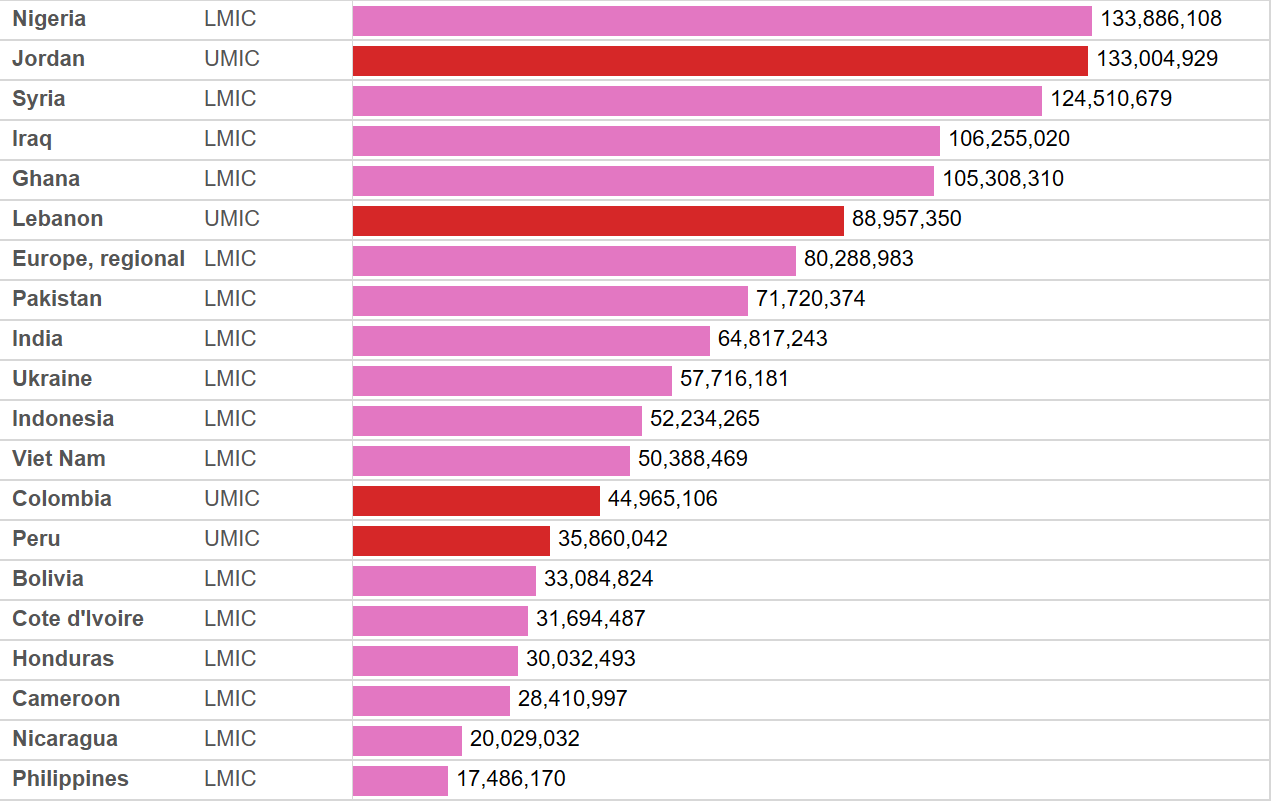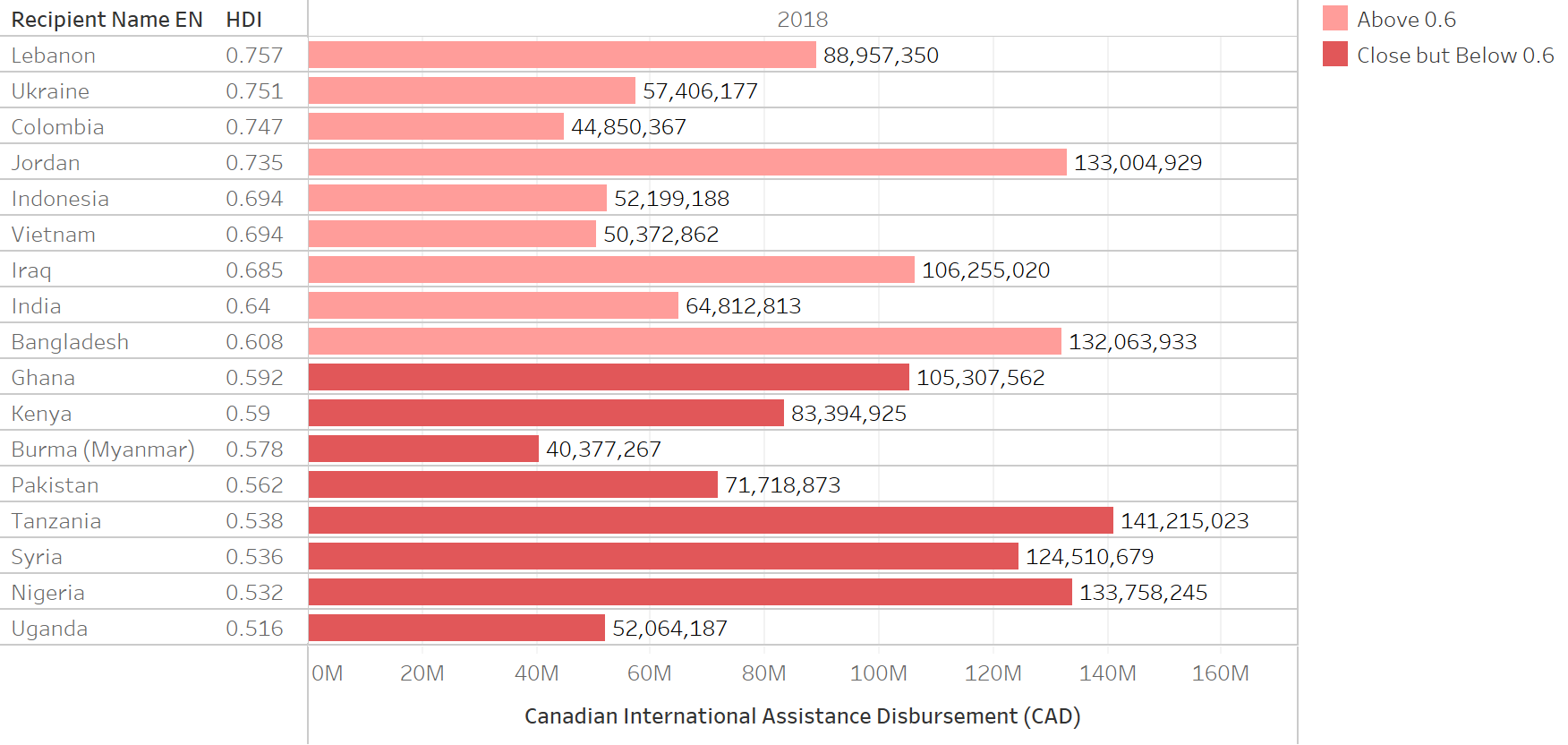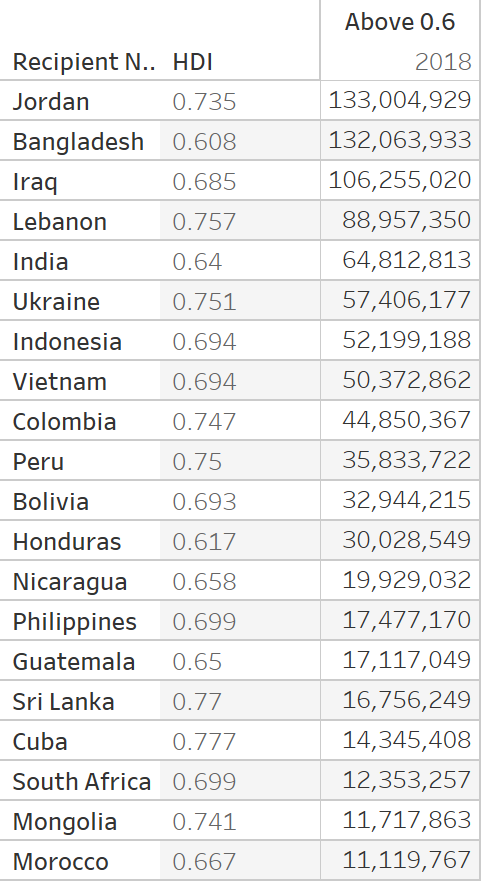
by Lance Hadley and Aniket Bhushan
Updated: October 2, 2019
As a main foreign policy platform pillar, the Conservative party has proposed a 25% cut to Canada’s foreign aid. Several assumptions and claims have been made linked to the proposed cuts, including the suggestion that $1.5 billion could be raised. And then re-purposed away from “middle income” and “hostile” countries to the “poorest”. As well as towards domestic priorities.
This analysis provides a common sense check of the assumptions and claims.
Can $1.5 billion in savings be found from foreign aid cuts as suggested?
Canada’s total international assistance very recently (only in 2018) crossed the CAD$6 billion mark. At face value a 25% cut can yield CAD$1.5 billion.
But this can only happen if key priorities (including national security interests) are cut.
How much aid goes to so called lower and upper middle income countries? Who would get cut?
At most, by cutting every single lower and upper middle income recipient that received Canadian assistance in 2018, the figure achieved would be approx CAD$ 1.54 billion (see graphics below).
The bulk of the cuts, about CAD$ 1.1 billion, would impact Lower Middle Income (LMIC) countries (in pink in the graphic below). Rest approx CAD$ 430 million would be in Upper Middle Income (UMIC, in red).
This level of cuts is only achievable however if all aid to the following key partners is instantly cut to zero: Nigeria, Jordan, Syria, Iraq, Pakistan
In addition very long term Canadian development partners, such as the following would also have to be cut to zero: Ghana, Ukraine, Vietnam, Colombia, Peru
What are these income groups and how do they compare to Canada?
Low Middle Income countries are those with per capita gross national income between $1,026 and $3,995. Upper Middle Income countries are those with per capita incomes between $3,996 and $12,375. These are official definitions, maintained by the World Bank.
Canada’s per capita GNI is $47,490. In other words, Canada’s is 46 to 12 times richer than the so called low middle income countries that are suggested be cut because they are no longer poor enough to need Canadian aid.
What about the 0.600 HDI level? Is there anything special about that threshold and how much would be raised by cutting those above it?
The policy platform also suggests employing “human development” rather than income as a better measure to set aid allocation thresholds. The proxy used is the UN’s Human Development Index (which is slightly ironic, given the overt criticism of the UN!). The level chosen is 0.600 on the HDI. It should also be noted it is unconventional to use this measure in isolation in aid allocation decisions – none of Canada’s peers apply such an approach.
There is no empirical literature or known justification behind the 0.600 level. In other words, there is nothing special about the 0.600 HDI level, it is arbitrary.
Nevertheless, we calculate that if the cuts were applied using the HDI benchmark, the most that could be achieved is CAD$1.1 billion.
Who would be cut, and who else would be at risk?
Using the 0.600 HDI threshold as a recipient cut off, other countries would fall into the mix, raising questions about how thoughtful this policy is. For instance, it does not explain how countries that do not belong to one group (middle income), but do belong to another (above 0.600 HDI), would be treated. One such example is Bangladesh, a long time and significant Canadian development assistance recipient that received over CAD$130 million in 2018 and is dealing with the Rohingya refugee crisis, among several other development challenges.
Using the 0.600 level, the following major country recipients would be cut: Bangladesh, Iraq, Jordan, Ukraine, Lebanon (among others).
The following major recipients would be very close to being at risk of being cut (likely during the period of a Conservative mandate if elected): Ghana, Kenya, Pakistan, Tanzania, Syria (among others).
Does this approach make sense?
There is merit to thinking about better ways to allocate scarce aid dollars. There is also merit to increasing the focus on the neediest (even though Canada does pretty well on this front compared to peers).
However, this policy idea seems to have less to do with any of that and more to do with the simple task of raising $1.5 billion, by cutting aid by 25%. Contrary to suggestion, it does not point to a coherent “philosophical” difference. For example, expected philosophical differences (such as support for abortion etc.) have been repeatedly reaffirmed as being outside the purview of these cuts. A further assertion made in explanation of the policy – that the cut is to countries and not programs – makes little sense, given programs are ultimately in countries!
It also seems to betray an understanding of the fiscal allocation process. The total level of international assistance is not set in stone. There are significant transparency issues regarding the predictability and future path of Canada’s development spending (which is not known publicly). To put it simply, the cuts of 25% may yield $1.5 billion in the first year, but what about the year after and thereafter?
Ultimately we should keep in mind that we are talking about an area that accounts for less than 2% of the federal budget. At 0.28 ODA/GNI Canada is already on track for its lowest aid level of any mandate in recent history. What appears to be at play is the politicization of fractions on decimal points, in an issue area that is a very easy political target (for all sides). Aid may not be anywhere near the top of mind concern for voters, but it is an easy enough punching bag to drive a negative wedge and polarize debate, especially given a healthy dose of misinformation in a complex nuanced area that is not well understood.
From this perspective, the proposed cuts have little to do with fiscal discipline, setting different priorities, or re-positioning Canada on the global stage. Nor does it seem to fulfill our obligation, if not enlightened self interest, in supporting the poorest and the neediest in the developing world.






Recent Comments